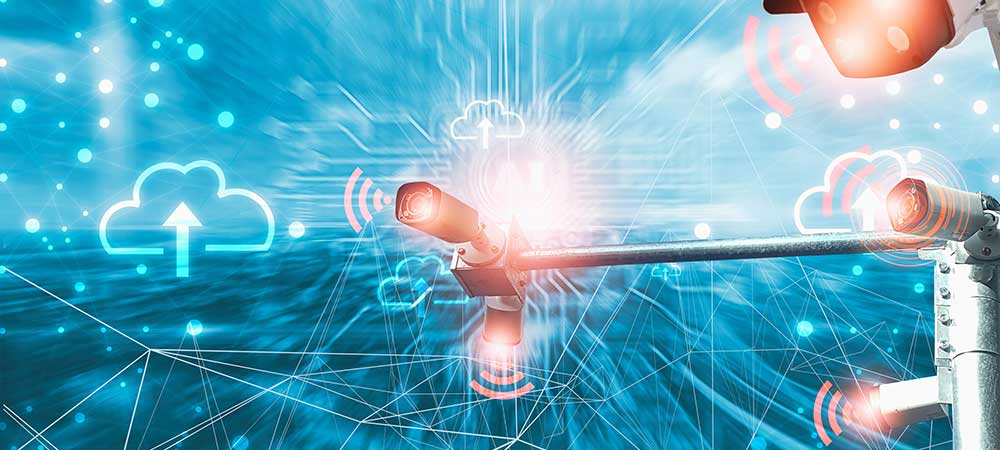We take a look at the impact of cloud video surveillance on today’s businesses as more organisations are using cloud technology for business development. Rishi Lodhia, Managing Director EMEA, Eagle Eye Networks, considers what the growing adoption of cloud video surveillance means for CIOs and some of the major advantages of utilising the technology for security and compliance purposes.
Like many industries, the video surveillance sector has seen a huge level of innovation in recent years with digital technologies, major trends such as Artificial Intelligence (AI) and automation, and the huge growth of cloud-enabled services significantly broadening its scope and adoption. The list of applications is lengthening all the time and as a result, there are more markets and use cases than ever before where organisations are applying ‘smart’ technologies to everything from public safety to process compliance.
For CIOs in particular, video surveillance also offers an opportunity to integrate powerful technologies into their wider IT estate, but in doing so, they must focus on the responsibilities that brings. So, where are the main changes and innovations being seen and what does the growing adoption of cloud video surveillance mean for CIOs?
- Automation and AI
Today’s video surveillance technologies are growing in complexity with the result that they can be used in a much wider range of industries compared to traditional use cases. Analytics, AI and Machine Learning technologies are being integrated to deliver smart solutions that can track and interpret video footage to provide insight across locations as diverse as city centres, factory floors and office spaces.
For instance, real time analytics and alerts provide a more efficient way for city authorities to monitor traffic level and pedestrian footfall, so that congestion and safety protocols can be implemented in advance of need rather than in reaction to an inconvenient situation or even a crisis. What’s more, with real-time video intelligence, smart camera systems now make it practical to carry out visual searches to improve location security or the safety of the general public, to precisely monitor human activity, or receive live alerts when certain pre-set parameters are triggered.
Intelligent systems can also detect loitering and other suspicious activities, capture incidents, notify authorities and track the movement of people or vehicles in real-time so that the emergency services can prioritise and respond more effectively to developing public safety incidents.
The list of applications is continually developing. During recent pandemic restrictions, smart video surveillance systems have been used to ensure that workers comply with COVID-19 distancing guidelines. And in factories and distribution centres, AI-powered solutions are also enabling firms to improve operational processes and even assess video data to help them schedule proactive maintenance.
Meanwhile, in healthcare settings, clinicians are increasingly using smart surveillance technologies to monitor and analyse the behaviour of vulnerable patients in real time without violating their privacy, receiving alerts the moment a potential hazard or safety risk is detected.
- Cloud computing
There’s no doubt that COVID-19 focused the attention of organisations everywhere on how cloud computing could help them respond to lockdown, remote working and the mass disruption caused by the pandemic. As a result, many began to adopt cloud-hosted video surveillance services, where the technologies are provided on an ‘as-a-Service’ basis, with Video-Surveillance-as-a-Service (VSaaS) removing the need for users to make significant capital investments on expensive infrastructure, such as their own data storage hardware. Instead, this VSaaS approach means data is hosted by secure third-party providers who are also well placed to offer value-add technologies such as analytics and automation applications.
Indeed, according to our recent customer research, the cloud is rapidly becoming an attractive option for video surveillance users, even for those with existing analogue cameras. The efficient and affordable scalability of the cloud is also enabling more organisations to add audio recordings to their use of visual images; the same research found among our customers, the number of surveillance cameras with audio recording functionality jumped more than 200% between 2016 and 2020.
- Compliance and regulation
But, as organisations and businesses collect more data from a wider variety of sources and devices (including digital camera technologies), the regulatory and compliance burden increases in order to protect the rights and privacy of people across society. In Europe, for example, the General Data Protection Regulation (GDPR) – and UK-GDPR in the UK – sets out clear responsibilities for businesses who collect, store and process personal data derived from video surveillance.
Specifically, video data needs to be completely protected from loss due to cybersecurity attacks, and in the financial services and healthcare sectors, the use of camera data is already tightly regulated. But, as smart surveillance technologies become increasingly valued across these organisations, the regulatory landscape is likely to evolve further to keep pace with the rate of innovation and change.
An important point here is that those responsible for the purchase, implementation and management of video surveillance systems will need to work more closely with their IT colleagues and technology partners. Clearly, many CIOs will be keenly interested in the way these systems are integrated with existing networks, security technologies and IT processes. Ensuring they are involved from an early stage will mean organisations are better placed to build solutions that minimise the risk of a security compromise, protect the rights of individuals whose images are captured by cameras, while ensuring that data is managed according to established best practices.
Without doubt, cloud video surveillance technologies will continue to grow in sophistication in the years ahead and their use will broaden as organisations look to derive process and efficiency advantages, while increasing the role for automation. Those CIOs that take advantage of the cloud to achieve greater security and compliance will be well placed to optimise their investment in video surveillance in the short and long term.
Click below to share this article

